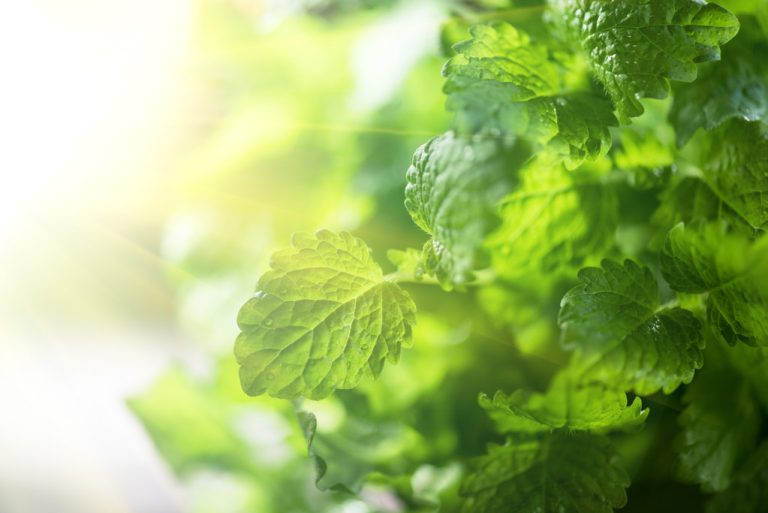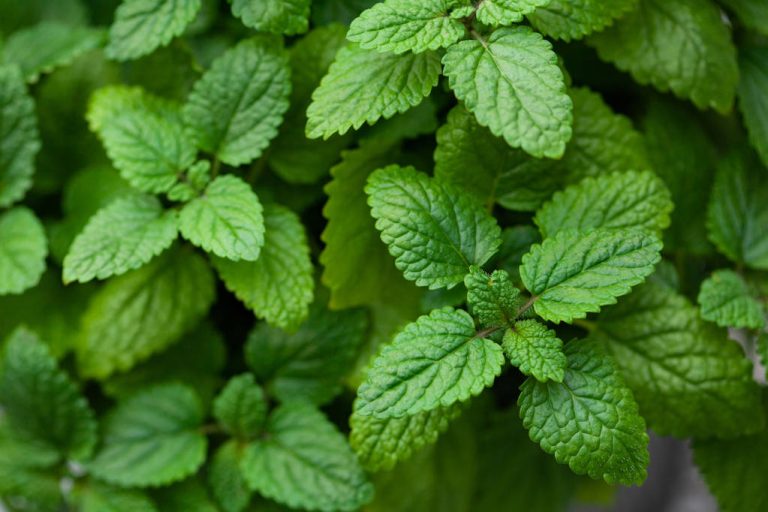Lemon balm tea is a refreshing drink and at the same time good for your health. It helps with many ailments and is prepared within a few minutes.

Lemon balm tea: Old medicinal plant with great effects
Lemon balm has a long tradition: the Greeks and Romans valued lemon balm as a medicinal plant. The name derives from the Greek word “Melitta”, which means honey bee. Even today it is very popular among beekeepers and is often used as bee food.
Lemon balm originally comes from the Mediterranean region, but today it is widespread all over the world. There are four common types, with lemon balm being the most well-known. It belongs to the mint family and reaches a height of up to 90 centimeters.
What few people know: under ideal conditions, the plant can live up to 30 years.
Effect of lemon balm tea and ingredients
Lemon balm not only scores with its unmistakable scent, you can also benefit from its ingredients. These include, among others:
essential oils
flavonoids
glycosides
rosmarinic acid
bitter substances
vitamin C
Numerous healing effects are attributed to the substances. Among other things, lemon balm helps with:
Inner restlessness or tension: Hildegard von Bingen said that lemon balm “makes the heart happy”. Studies subsequently confirm this thesis. The medicinal plant has a calming, anxiolytic and mood-enhancing effect (study).
Nervousness during exams: Lemon balm is also said to increase the ability to concentrate.
Sleep problems: The medicinal plant can significantly reduce sleep problems. In this way, subjects in a study were not only able to fall asleep more easily, but also to sleep better (study).
Cold sores: The medicinal plant has an antiviral and anti-inflammatory effect. It has been proven that cold sores heal much faster when applied externally (study).
Digestive problems: The bitter substances contained ensure that the body produces more digestive juices. The plant also has a calming effect on the intestinal muscles. Lemon balm can relieve flatulence and reduce a feeling of fullness.
Menstrual cramps: The medicinal plant is nicknamed lady’s herb because the antispasmodic effect can help with menstrual pain.
What do I have to look out for with lemon balm tea?
Tip: No matter what type of lemon balm you choose, you can easily grow it yourself. The plant needs a lot of light and loose, nutrient-rich soil. You can also plant them on the balcony or even in the apartment.
For a delicious lemon balm tea you can use both the fresh twigs and dried leaves. If you choose tea made from fresh plant parts, as a rule of thumb you can use around twice the amount of dried herbs. For tea, you should definitely harvest lemon balm before it blooms.
To dry the leaves, simply tie each branch individually to a piece of string and hang them in a room protected from light.
If you prefer to buy the leaves, it is best to use organic loose tea. All parts of the plant containing active ingredients are used, while it is free of flavorings and other additives and pesticides. You can also improve your climate balance if you rely on regional herbs.

Recipe: Make lemon balm tea yourself – instructions
Preparation of the lemon balm tea:
For 250 milliliters of tea (one cup) you need two teaspoons of dried lemon balm.
Because of the volatile essential oils, do not boil the water over the leaves.
Let the tea steep for about ten minutes.
Note: As various interactions have been found in the laboratory, you should not use lemon balm tea if you are taking thyroid hormones.




